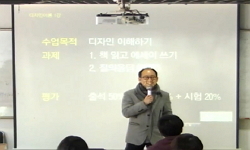This thesis is an attempt to lay the groundwork for a general theory of desirability in design based in Lacanian psychoanalytic theory. I begin by exploring the distinctions between desirability, usefulness and usability as dimensions of product exper...
http://chineseinput.net/에서 pinyin(병음)방식으로 중국어를 변환할 수 있습니다.
변환된 중국어를 복사하여 사용하시면 됩니다.
- 中文 을 입력하시려면 zhongwen을 입력하시고 space를누르시면됩니다.
- 北京 을 입력하시려면 beijing을 입력하시고 space를 누르시면 됩니다.
https://www.riss.kr/link?id=T13419033
- 저자
-
발행사항
서울 : INTERNATIONAL DESIGN SCHOOL FOR ADVANCED STUDIES HONGIK UNIVERSITY, 2014
-
학위논문사항
학위논문(박사) -- INTERNATIONAL DESIGN SCHOOL FOR ADVANCED STUDIES HONGIK UNIVERSITY , 디자인학과 , 2014. 2
-
발행연도
2014
-
작성언어
영어
- 주제어
-
발행국(도시)
서울
-
형태사항
iv, 233 p. ; 26 cm
-
일반주기명
지도교수: Kim, Hoo Sung
- DOI식별코드
- 소장기관
-
0
상세조회 -
0
다운로드
부가정보
다국어 초록 (Multilingual Abstract)
This thesis is an attempt to lay the groundwork for a general theory of desirability in design based in Lacanian psychoanalytic theory. I begin by exploring the distinctions between desirability, usefulness and usability as dimensions of product experience, and go on to examine existing approaches to desirability derived from sociology, marketing and aesthetics. Following Klaus Krippendorff, I acknowledge the fundamental role of meaning in the experience of design, but argue for the need to take this ‘semantic turn’ to its full conclusion. I then introduce some basic concepts of psychoanalysis and argue for their utility in the analysis of desirability in design. I go on to outline four categories of the experience of a desirable artefact: meaning, identity, fantasy and ideology. I then discuss how these terms can be applied to both the criticism of design and to design processes, with some expansive examples of the former included, and suggest several possible avenues for future research.
The thesis argues for the necessity of qualitative, socio-cultural approach to desirability based on concepts of desire, signification, identity and fantasy derived from Lacanian psychoanalysis, and emphasises the need for a sharp distinction to be drawn between usability and desirability. It is a strongly theoretical work, but includes examples of practical application wherever possible.
목차 (Table of Contents)
- Introduction 1
- Chapter 1: The Limits of Design Knowledge 7
- 1.1.The Three Forms of Product Experience 7
- 1.2.From Design Methods to Design Thinking 9
- 1.3.The Limits of Design Thinkning 15
- Introduction 1
- Chapter 1: The Limits of Design Knowledge 7
- 1.1.The Three Forms of Product Experience 7
- 1.2.From Design Methods to Design Thinking 9
- 1.3.The Limits of Design Thinkning 15
- 1.4.Usability in Foundational and Instrumental Research 19
- 1.5.The Empty Centre of Human-Centred Design 23
- 1.6.Conclusion 28
- Chapter 2: Defining Desirability 30
- 2.1. Desirability: Basic Concepts 30
- 2.2. Qualitative Approaches to Design Research 34
- 2.3. Design and Consumption 44
- 2.4. Design and Aesthetics 50
- 2.5. Conclusion 52
- Interlude 1: The Vespa and Meaning 55
- Chapter 3: The Semantic Turn 59
- 3.1. Making Sense of Things 59
- 3.2. Designing for Humans 63
- 3.3. Artefacts in Use 70
- 3.4. Artefacts in Language 74
- 3.5. From Artefacts to Cultural Interfaces 81
- Interlude 2: Apple and the Fetishization of Usability 88
- Chapter 4: Language and the Brain 91
- 4.1. Language and Knowledge 92
- 4.2. Relevance 95
- 4.3. Neuronal Plasticity 100
- 4.4. Biology and Culture 106
- 4.5. Second-order Understanding 110
- Interlude 3: Adrian, Fantasy and the Fashion Industry 113
- Chapter 5: The Psychoanalytic Turn 118
- 5.1. Freud and Lacan 118
- 5.2. Fantasy 121
- 5.3. The Seven Veils of Fantasy 126
- 5.4. Signification 132
- 5.5. The Graph of Desire 136
- Chapter 6: Towards a Theory of Desirability in Design 146
- 6.1. Objects of Desire 146
- 6.2. Meaning and Desire in Design 148
- 6.3. Identity and Desire in Design 152
- 6.4. Fantasy and Desire in Design 156
- 6.5. Regulating Jouissance 161
- 6.6. Second-Order Understanding and Enjoyment 167
- Interlude 4: The Nord Electro 4D and Me 169
- Chapter 7: Enjoyment as a Design Factor 176
- 7.1.Desirability and Design Studies 177
- 7.2 Desirability and Design Processes 193
- 7.3 Desirability and Design Education 200
- Interlude 5: Ideology and the Synthetic Faculty of Design 202
- Conclusion 221
- Bibliography 224












